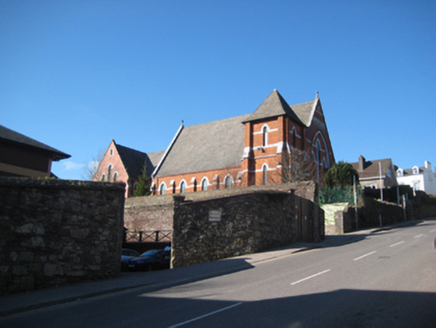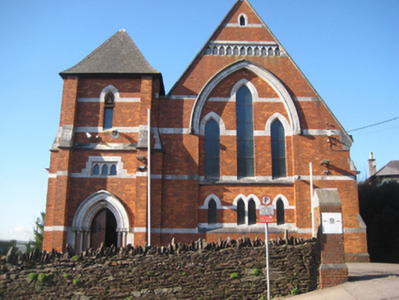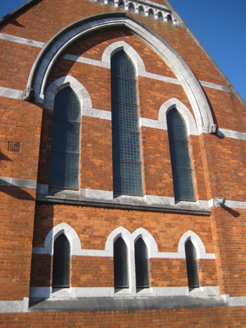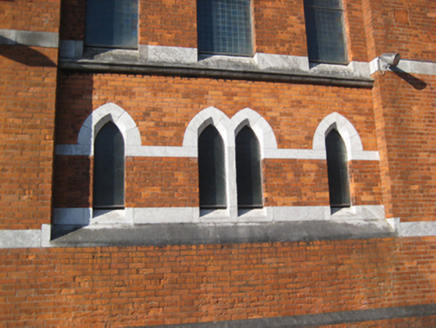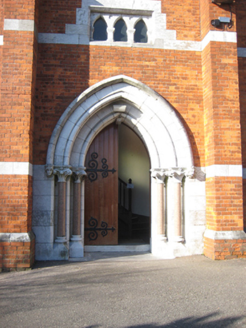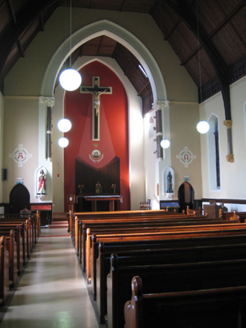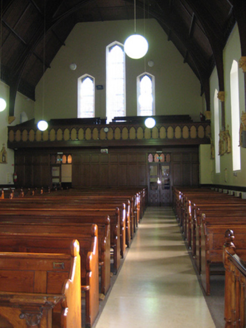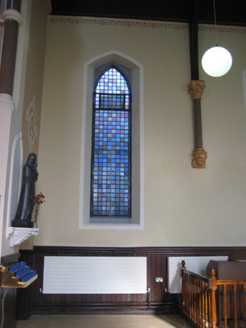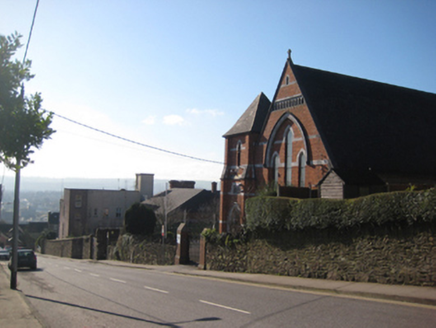Survey Data
Reg No
20863043
Rating
Regional
Categories of Special Interest
Artistic, Historical, Social
Original Use
Church/chapel
In Use As
Church/chapel
Date
1890 - 1900
Coordinates
168362, 72562
Date Recorded
01/03/2011
Date Updated
--/--/--
Description
Detached gable-fronted double-height former Methodist church, built c.1895, having triple-bay gable with attached single-bay two-storey truncated entrance tower to front (east) elevation. Five-bay side elevation to nave, and gable-fronted T-plan block to west. Converted to Roman Catholic church, 1949. Pitched slate roof, hipped and sprocketed roof to entrance bay with cut-stone coping, carved crucifixes to east and west gables and cast-iron rainwater goods. Red brick English bond wall to front (east) elevation with cut limestone horizontal bands, ashlar limestone verge copings to gable and angled buttresses to entrance porch having cut limestone copings. Smooth render to rear section. Lancet window openings with splayed limestone sills and fixed-pane leaded stained glass windows. Pointed arch window openings to front (east) elevation in tripartite arrangement with chamfered reveals, cut-limestone voussoirs, limestone hood moulding and fixed-pane leaded stained glass windows. Pointed arch door opening to entrance tower with block-stopped hood moulding, stepped ashlar reveals, paired archivolts springing from polished limestone columns and vertically-sheeted timber double doors having wrought-iron strap hinges. Single-aisled interior with timber sheeted wainscoting, timber pointed-arch roof trusses on stone corbels, plain pointed chancel arch and timber choir balcony to east end. Set back from the road, bounded by rubble sandstone wall with sandstone soldier coping.
Appraisal
A handsome, small-scale church which is well maintained and retains its original aspect. It was built to serve the Methodist community from the nearby Victoria Barracks and is an interesting reminder of the religious diversity of this area in the past and the social influence of the military presence on the surrounding area. Though altered internally in the mid twentieth century to accommodate Roman Catholic liturgical requirements, it retains much of its character and charm.
